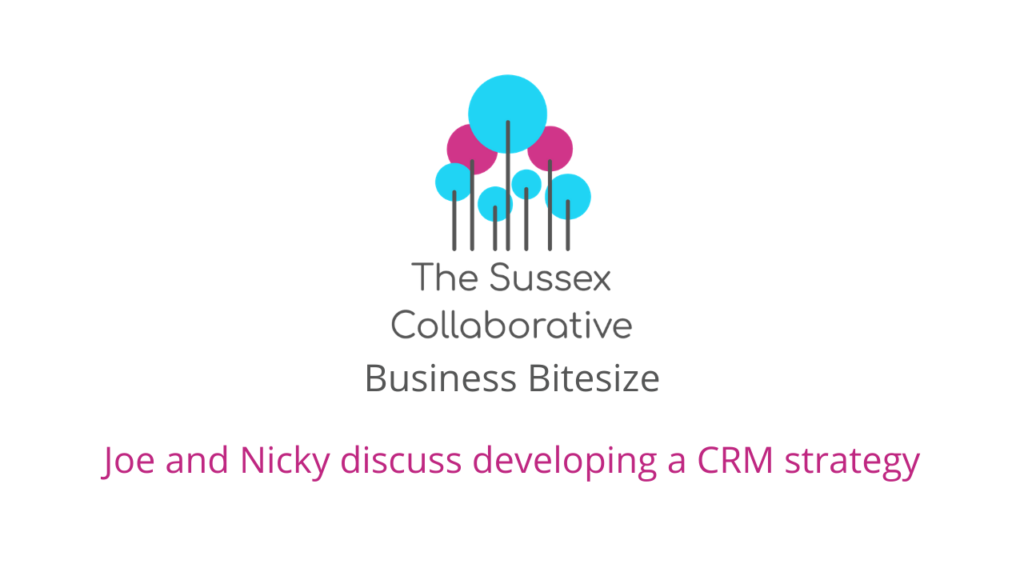We are living in a time where we now expect anything and everything to be available at the click of a button, so when we encounter service which is slow, products which are complicated to purchase, or companies who make it inconvenient to work with them, we move on quickly to a provider who is more customer friendly and meets our needs.
As consumers ourselves we know what frustrates us and that we want to be heard or listened to when we have a question or problem. So as Joe reflects on in his recent blog, it is surprising how easy it is and regretfully how common it is, for companies to unintentionally put barriers in the way of potential customers. Sharing 3 examples of how frustrating it can be engaging with companies, Joe sets us all a challenge to try and do business with ourselves.
Customer Experience is becoming one of the top differentiators for many businesses, operating in crowded and highly competitive markets. Which is why now is a good time to take that step back and review how your business is working for your customers. To kick things off Nicky has developed 10 questions to ask yourself and your team, along with some simple tips to help improve your customer’s experience.
Questions to ask yourself and your team
Whilst we all like to think we are running our businesses well, with the introduction of new processes, people or technologies often comes well meaning tweaks to the customer experience. This is why we recommend there is value in taking a regular look at how you do business, asking the following questions of everyone involved (including a selection of existing and prospective customers):
- Are we convenient / reliable / available / accountable and dependable?
- Where are we complicating things for our customers?
- What opportunities are we missing to win new customers and retain existing ones?
- What are the primary reason for our failed orders or sales?
- Why did we lose repeat customers over the last 12 months?
- Where and why are we slow to respond or deliver for our customers?
- What new technology is available to us which would help our customers engage with us?
- Are we actively collecting and acting on feedback from our customers?
- What are the primary causes for customer complaint and what have we done about it?
- When did we last review our customer journey with a fresh and unbiased pair of eyes?
Checklist for being a customer friendly business
Delivering a great customer experience, so that it is easy for anyone to do business with your organisation, is more than just having a fabulous customer service team. A positive customer experience should be embedded as part of the culture across the whole business, with everyone clear on their part to play. A few examples of this to consider are:
- Making it easy to find information online as a quick source of FAQ’s is great, more so when it is combined with the ability to quickly talk to a human, for more complex questions.
- Personal contact as a service, has now become a differentiator in the world of poorly informed chat bots and never ending circular online help pages and links.
- Walk through the online purchases journey and mark the experience at each step out of 5 for ease, simplicity and the speed in which you can complete the final purchase.
- Audit the information being collected in fields via customer sign up forms by questioning how, when, where the data is being used and the value the data is giving you relative to the time/frustration for customers to provide it.
- Remove any “nice to have” or “just in case” fields from the database and prioritise converting sales rather than creating barriers.
- Empower all team members to offer quick wins to “delight” customers with instant service or simple complaint resolution.
- When a customer first approach is embedded into the company culture, it may cost a little more in refunds/compensation, but it is an investment worth making to build an emotional connection with clients, when compared to the cost of lost business or new customer acquisition.
- Regular measurement of customer (and employee) sentiment through net promotor scores (NPS) and reviews, is a sure way to know if what you are doing is right when it comes to customers.
- Being proactive in asking for feedback, listening to it and responding positively and quickly, is a sure way to retaining clients.
The benefit of a good CRM

As part of the business bitesize series, Joe and Nicky recently discussed the value of implementing a well designed CRM platform, which is especially key to delivering a well rounded customer experience.
By building your relationship with loyal and repeat customers both through person to person contact and by using your CRM to build automated workflows, enable personalised communication or simply remind them about your value to them with well timed emails which pre-empt their needs, a CRM is a great way to provide support and guide their relationship with you. Click here to view the episode.
Final thoughts
Investing in you customer experience, starting with the first contact a potential client has with your business, if done well will grow your loyal and happy customer base all of whom have the potential to also become advocates for your products and services. By reducing the churn of lost clients and increasing retention rates, any investment required to do so will be rewarded with increased revenues and the delivery of greater profits – a win : win in our book!
If we can be of assistance to you in creating your customer experience strategy, please do let us know how we can help.

